Final Report/Thesis 2018
Abstract
The corpse of a mystery man’s body was found at Adelaide’s Somerton Beach, South Australia, Australia, on the 1st December 1948 and was hence referred to as the Somerton Man. Till this day the identity of the Somerton Man and the cause of his death is unknown. This project will be broken up into three different tasks, with all contributing towards the unsolved case of the mysterious man. The first task is based around the piece of paper that was found inside his trousers pocket. This piece of paper had five lines of capital letters, and is thought to be some kind of code or cipher. It was found that this mysterious code was a part of a poetry book, known as the ‘Rubaiyat of Omar Khayyam’. The letters on the mysterious code are thought to be first letters of words, based on previous year’s project groups. The location of his death is near Morphettville Racecourse, which leads to belief that the Somerton Man’s mysterious code are different horse names. However, using various statistical approaches, this was proven to be not true. The second part of this project involved, using a mass spectrometer to analyse different isotopic signatures of the samples. More specifically, the samples used were the shaft of the hair, obtained from various people, which were ablated by the laser, and effectively recorded the various elements. This will be compared with the Somerton Man’s hair, to identify specific elements present, as well as noting how long he was in Adelaide before his death. Different DNA samples, were analysed in the final task. Using software tools the samples were degraded, until the DNA became unidentifiable. It was found that degrading 50% or greater of the DNA sequences, makes the DNA unidentifiable.
Acknowledgements
Project supervisor Professor Derek Abbott, for the helpful and motivational advice, as well as the exceptional guidance, which was presented on each of the completed tasks. The University of Adelaide Microscopy Centre, for permitting the project team to use the mass spectrometer. Dr Sarah Gilbert for the assistance and suggestions whilst using the mass spectrometer. Also, thank you to all the volunteer who gave their hairs to use during the experiment. In addition, the project team would like to acknowledge all the software support from University of Adelaide, including Microsoft, Matlab as well as Iolite from the Microscopy centre.
Introduction
Motivation
During this project, a study was undertaken on an unsolved murder case. On December 1st, 1948, an unknown man was found deceased, on Somerton Beach in Adelaide [1]. From then on, he was labelled, ‘the Somerton Man’. There was no form of identification present on him, as well as little information surrounding his death. Therefore, the cause of his death is still unknown to this day [2]. Figure 1 shows the deceased man.

A piece of paper with the words “Tamám Shud” printed on it, was found rolled up inside his trousers pocket, which can be seen in Figure 2. This statement can be translated from Persian to either “it is ended” or “it is finished”. This piece of paper was found to be part of a poetry book, the ‘Rubaiyat of Omar Khayyam’ [3]. The theme of the book is that, one should live life to the full and have no regrets when it ends [4].
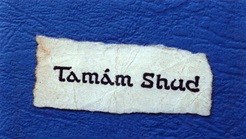
The book is speculated to be related to the dead man, due to the parchment. Hence, the case being known as the Tamam Shud case. This has been considered, since the early stages of the police investigation, to be "one of Australia's most profound mysteries [6].” Capital letters were found to be scribbled in the back cover of the Rubaiyat of Omar Khayyam, as seen in Figure 3. Thus, indicating that these letters are somewhat vital to the case at hand, as it is speculated that they may be a form of code or cipher.
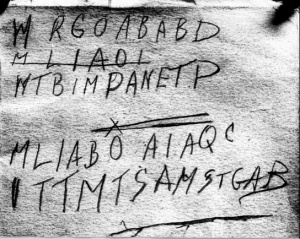
The code consisted of five various lines of capital letters, with a total of fifty letters all together. The second and fourth lines are very similar in the way in which they appear. It is therefore, believed that the Somerton Man may have made an error with the encryption, when writing the second line, hence why it is struck out. It is unclear whether some of the letters are in fact an “M” or “W” [7]. For tasks referring to the code, it is assumed that the unclear letter is an “M”. His body was found to be located near the Morphettville Racecourse, this leads to the belief, that the Somerton Man’s mysterious code are related to different horse names. It was also noted that the people who found the deceased body of the Somerton Man, were racehorse jockeys [2]. An Inductively Coupled Plasma Mass Spectrometer (ICP-MS) is used in this project to identify the various isotopes in various people’s hair. With the main concern of Strontium as, Adelaide has high levels in strontium in the soil compared to the rest of Australia.
Previous Studies/Related Work
Australian Department of Defence
In 1978, a request was sent by journalist Stuart Littlemore to the Department of Defence cryptographers to analyse the code. Unfortunately, the cryptographers were unable to crack the code, as they could not provide a satisfactory answer. It was stated that the code had “insufficient symbols” or a “disturbed mind” generated the meaningless code [8].
The University of Adelaide project groups
There have been several Honours project groups at the University of Adelaide that have undertaken this project. The previous work the project groups have done include:
- Letter frequency analysis in different languages.
- Initial letter and sentence letter probabilities.
- The likelihood of the code being an initialism of a poem.
- Different cypher techniques.
- The design and implementation of a web crawler.
- 3D generated reconstruction bust of the Somerton Man.
Main conclusions that these project groups have come to are:
- It is unlikely that the mysterious code is created randomly.
- There is strong evidence to believe the mysterious code is most likely to be in English.
- It is not likely that the mysterious code are initialisms extracted from poems.
- The Rubaiyat of Omar Khayyam was not used as a straight substitution one-time pad for encryption.
- The Rubaiyat of Omar Khayyam was not created as a one-time pad for the mysterious code.
With these conclusions, this project will look into further detail of what the Mysterious Code is [9] [10] [11] [12] [13] [14] [15].
Mass Spectrometer Pervious Work
Previous years have also done study with Mass Spectrometer. The 2013 project group had some of Somerton Mans hair and plotted the different elements in the hair comparing with controlled samples. Analysis was conducted on different elements between the two samples. This was done using a glass slide, which have impurities in it [13]. In the 2016 project group, they recreated the analysis using a quartz slide, which does not have impurities. They concluded that Somerton Mans had some abnormally high readings, of some elements, one of which is strontium [15]. In this project, the strontium level will be looked in higher detail and this will be used to indicate how long the Somerton Man was in Adelaide before his death.
Aims and Objectives
The first task that will be done is to understand if the mysterious code are a collective object (horse names, Adelaide street names, Australian beaches, etc.). This will be done using hypothesis testing. An extension of this task will also be completed, which involves the Rubaiyat of Omar Khayyam. The second task that will be performed is using a mass spectrometer. Controlled sample hairs will be compared with Somerton man’s hair, to see how long he was in Adelaide before his death, by finding different elements in the hair. The third task that will be accomplished is using DNA data. The data will be degraded using software tools till it becomes unidentifiable. This then can be used to see how much DNA we need from Somerton man, where further research can undergo.
Technical Background
P-value Theorem
A p-value is a recognised statistical probability, which acknowledges whether an equal or larger effect is present, in comparison to its observed counterpart. In statistics, the p-value helps you determine the significance of the statistical hypothesis by observing the results that were sampled. This determines the probability that the results are due to chance, rather than the experimental conditions. Thus, determining the strength and validity of the results against that of the null hypothesis [16]. In this project, the main focus with the p-values is to determine whether the mysterious code, represents local horse names. Where the null hypothesis is ‘The group of letters are horse names’ with the alternative hypothesis being ‘The group of letters are not horse names.’ For null hypothesis to be accepted the p-value must be larger than 0.05, this indicates that the observed data point is located in the ‘most likely observation’ range, as seen in Figure 4. If the p-value is lower than 0.05, this indicates that the collected results are statistically significant and that the observed data point is located in the ‘very unlikely observations’ range. If the results are in the ‘very unlikely observations’ range, then the null hypothesis can be rejected, which means that the mysterious code is indeed, not horse names [17].
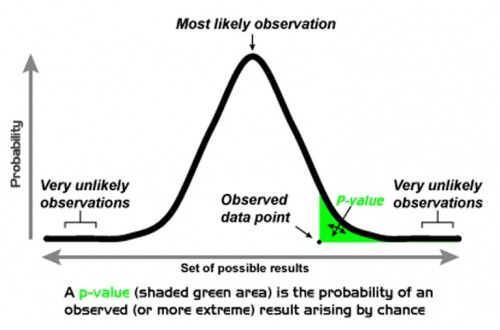
Figure 4 shows, the y-axis is the probability and the x-axis is the set of possible results.
Mass Spectrometer
A mass spectrometer is an analytical technique which, when given a foreign sample, it can detect unknown compounds within it. The mass spectrometer produces a multitude of ions in the sample, which then uses a mass to charge ratio of the different ions and records the quantity of each ion type [19]. The components of a typical mass spectrometer is seen in Figure 5. The three major components are the ion source, analyser and the ion detector system.

The ion source produces gaseous ions from the sample that was used. The analyser, then sorts the different ions by using the mass-to-charge ratio, according to their mass components. The ion detector system detects the different ions in the sample and records the quantity of each ion type and converts it into an electric signal [20]. The Inductively Coupled Plasma Mass Spectrometer (ICP-MS) is the type of mass spectrometer that was used in this project. The ICP-MS is faster, more precise and sensitive at finding different ions compared to other types of mass spectrometer [21]. In regards to the project, the sample being used is the shaft of the hair.
Single Nucleotide Polymorphism (SNP)
Single Nucleotide Polymorphisms (SNPs), are one of the most common and well talked about genetic variations, which can be present between humans [22]. These variations occur within a nucleotide (a single block of DNA) and happen roughly within 1 out of 300 base pairings [23]. In regards to the project, SNPs will be removed from a DNA sample.
Knowledge Gaps and Technical Challenges
The technical challenges that will be encountered in this project are related to all the knowledge gaps mentioned. To complete each task within the project, further development for programming skills, such as Matlab were required. P-value calculation and hypothesis testing needed some revision, to ensure that a satisfactory level of understanding of the concepts was present. The skill to use Microsoft Excel to perform statistical analysis on the p-value, is required. It was also required to learn how to correctly use a mass spectrometer and interpret the results, this can be done by finding multiple ways to enhance knowledge, before trials.
Task 1: Code Analysis
Aim
The aim of this task is to comprehend whether the mysterious code represents some collective object. The collective objects that will be used are horse names, Australian beaches and cities, South Australian street names, and The Rubaiyat of Omar Khayyam book. The assumption will be made that the letters in the mysterious code, are the initialism of a word. The Somerton Man had a lot of associations with horses, so further research will be going into the assumption that the mysterious code are ‘horse names’. The null hypothesis is ‘The group of letters are horse names’ and the alternative hypothesis is ‘The group of letters are not horse name.’
Preperation
Before the initialisation of this task, the details of the whole case were reviewed. This review included the following; who found the corpse, where it was located and when it was discovered. This gave a better understanding of what type of collective object should be researched, which are stated above. As mentioned before, the reason why horse names are a major factor is because the location of his body was found to be located near Morphettville Race course, as seen in Figure 6.
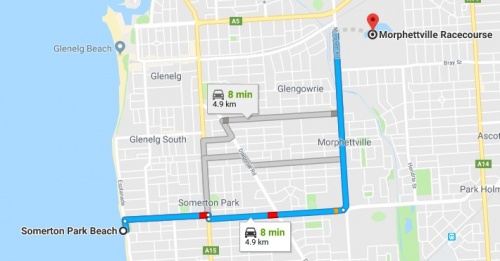
It should also be noted that the people who found the deceased body were racehorse jockeys. Hence the reason we assumed the mysterious code are the initialism of horse names from the year 1948.
Method
The approach to determine if the mysterious code represents collective objects, will be done by calculating the p-value and implementing hypothesis testing. In the case of the horse names, there were no direct websites, which provided horse names in the year of 1948. This led to discovering evidence of these names within relevant newspapers and articles. This was done by using ‘Trove’, a search engine to help find resources in Australia. More specifically, in this case it was used to obtain articles and newspapers from 1948. The other collective objects, as mentioned above, were found using South Australian government websites. This led to an abundance of cross checking, to make sure that the list which was going to be utilised, was indeed correct. Matlab was used as the software tool. The initial letter of the each collective object was all that was needed, where using code was implemented to perform this task. In the case, where a collective object had multiple words, both words were included. Also if there was any extra punctuation, it was removed. A demonstration is shown in Figure 7, which illustrates the input and output results for the horse names case and also displays the frequency of each letter.
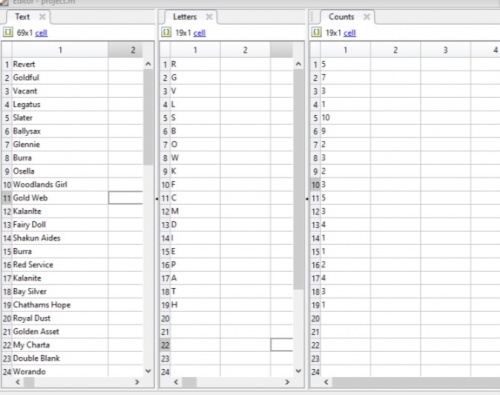
Excel was used, to produce the statistical results from Matlab. The letter frequency will be obtained by dividing the amount of each letter over the total amount calculated, where then a p-value test was performed and a comparison graph was completed.
Results
Each collective object was compared to the mysterious code by the frequency of each letter. Where the x-axis represents the alphabet and the y-axis represents the frequency of the letters between the two testing objects. The p-value test was also completed to verify the results, where a p-value of less than 0.05 shows that it is very unlikely that the collective object is the mysterious code.
Horse Names
The comparison of horse names to the mysterious code is seen in Figure 8.
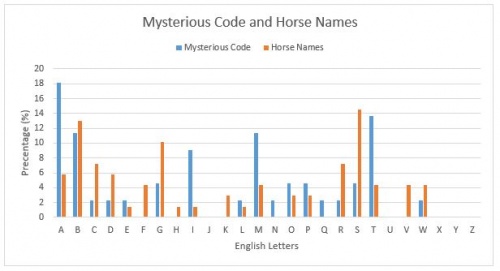
There was a sample of 69 horse names and it can be seen on the graph that the horse names do not correlate with the mysterious code with many of the English letters. This was also proven by the p-value, as it was lower than 0.05, which means the null hypothesis is not accepted.
Australian Beaches
The comparison of Australian beaches to the mysterious code is seen in Figure 9.
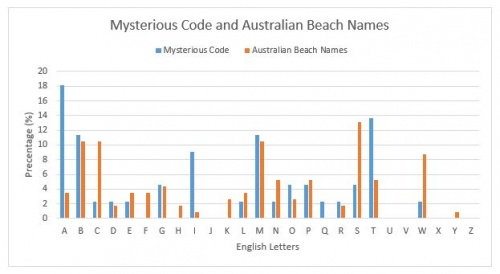
There was a sample of 114 beach names. Analysing the graph it be seen that the frequency of the letters do correlate with mysterious code. As the results seemed genuine a hypothesis test was done between this values. The results showed a p-value of greater than 0.05, which indicates that the mysterious code could be Australian beach names.
South Australia Street Names
The comparison of South Australian street names to the mysterious code is seen in Figure 10.
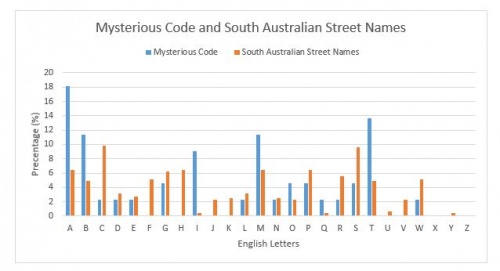
There was a sample of 447 South Australian street names. Observing the graph it can be seen that the frequency of the letter are not similar with the mysterious code. This was also proven by the p-value, as it was lower than 0.05.
Australian City's
The comparison of Australian city names to the mysterious code is seen in Figure 11.
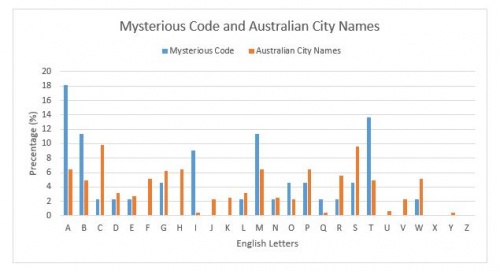
There was a sample of 90 Australian city names. Observing the graph it can be seen that the frequency of some letter are similar with the mysterious code. A hypothesis test was then done to check the results. The p-value that was obtained was less than 0.05.
The Rubaiyat of Omar Khayyam book
The comparison of the Rubaiyat of Omar Khayyam book to the mysterious code is seen in Figure 12.
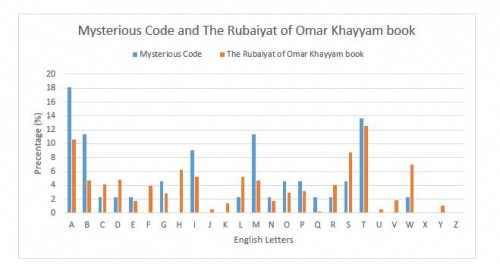
There was a sample of 852 words form the book. Observing the graph it can be seen that the frequency of the letter are not similar with the mysterious code. This was also proven by the p-value, as it was lower than 0.05. An extension of this task was also done. This includes analysing The Rubaiyat of Omar Khayyam book more carefully. Previous years stated that the mysterious code does not correlate with the book. Each paragraph in the book has four lines of words (see Figure 13), which compared with the mysterious code also has four lines. Still assuming that each letter in the mysterious code is an initial word, we can compare the two.

The task was to count how many words are in each line of the book and compare it with the mysterious code. Using the first paragraph in Figure 13 (outlined with a red square), the first line has 9 words, then followed by 7 words in the second line, then 8 words in the last two lines. Comparing just the first paragraph with the mysterious code from line 1 to 4, there are 9, 11, 11 and 13 letters respectively. It already can be seen from the first paragraph that there may not be a correlation between the mysterious code and the book. Counting every line would be very time consuming, therefore a text file of The Rubaiyat of Omar Khayyam was used, in correlation with Matlab to count each word in each line. Then using excel, a graph was plotted with error bars to the number of letters in the mysterious code. This can be seen in Figure 14.
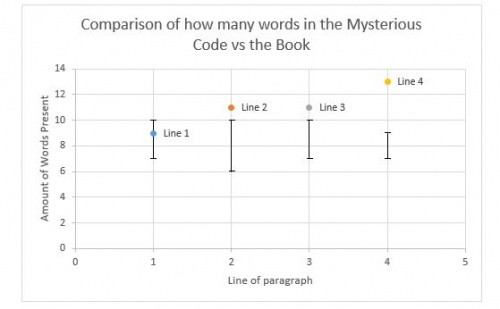
The x-axis represents which line in the paragraph it is and the y-axis represents the amount of words present in that line. It can be seen that on line 1, the mysterious code is in the error bars. The rest of the lines are out of the error bars. This indicates that the mysterious code is not from The Rubaiyat of Omar Khayyam book and further proves the previous year’s studies of the book not being part of the mysterious code.
P-value
A summary of the p-values are shown in Table 1.

It can be observed that the only collective object that is above 0.05 is Australian beaches, this indicates that the mysterious code could be Australian beaches.
Conclusion
Overall, the results have shown, that it is unlikely that the mysterious code represents the hypothesis stated, of that it is horse names. It has also shown that it is unlikely to be South Australian street names, Australian city names or The Rubaiyat of Omar Khayyam book, even with extensive analysis on the book. But to some surprise it is possible that the mysterious code is Australian beach names, as the p-value was above 0.05. Future research will be required to obtain more meaningful results.
Task 2 Hair Analysis
Background Theory
Analysing elements in the hair could reveal a great deal of useful information on a person’s recent life, this includes their lifestyle imbalances, living environment and dietary problems. Also the mineral levels in hair is about ten times more robust, than compared to blood [26]. These results could reveal where the last place Somerton Man had been to or even the last activity that Somerton Man had done, which could provide some useful evidences in solving this case. Knowing how much hair grows is very important for this project. For every month that passes, hair grows by 1cm [27]. This means the newest hair is in the root.
Aim
The aim of this task is to identify the different isotopes present in several different people’s hair. More specifically the element of concern is strontium. Adelaide has high levels in strontium in the soil compared to the rest of Australia. With this knowledge, the task is to test various hair samples, which have left Adelaide, within the past month and compare it to that of hair samples that have not left Adelaide for at least a year, to see how the strontium values change. This will then be compared with the strontium levels in the Somerton Man’s hair, which can determine how long he was in Adelaide before his death. The ICP-MS, is the approach to determine the different isotopes within the hair, which will then return a spectral analysis of the hair. The spectral analysis will be completed by laser ablation of the hair, where the hair will be ablated with a laser and the spectral elements are recorded.
Preparation
Hair Elements
Before the ICP-MS could be used for the analysis on the hair samples, different isotopes had to be chosen for the ICP-MS to find. Research was completed to find the most common chemical elements inside human hair, which included carbon, hydrogen, oxygen, sulphur, phosphorus and zinc. Then further research to indicate what element we want the ICP-MS to find, which included any toxic elements and common elements in food. There were 24 isotopes that were recorded by the ICP-MS and are shown in Table 2.

Hair Samples
In this project, a different hair samples was obtained, from five different individuals, for more reliable and accurate results. Two of these samples obtained, were from people that left Adelaide for a period of time and the other three samples were from people that stayed in Adelaide. All the samples will be anonymous for privacy reasons and will be identified as A, B, C, D and E. A summary of each hair sample is shown in Table 3, this includes which sample is identified as, sex, the date the hair was obtained and a brief description of the sample.
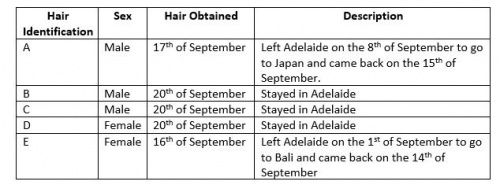
The length of time out of Adelaide is very important, as we can determine the length of hair that was in Adelaide and the length of the hair that was outside of Adelaide. Sample A left Adelaide for 7 days, assuming there is 30 days in one month and hair grows 1cm per month, therefore 2.33mm of hair is from Japan. Similarly with sample E, they left Adelaide for 13 days, therefore 4.33mm of hair is from Bali. Also have to take consideration of the 2 days from when they came back to Adelaide to when the hair was obtained, this is 0.67mm. An example of the length of the hairs is shown in Figure 15.

The red displays the 2 days before obtaining the hair, when both samples came back to Adelaide. The orange shows the length of sample A and the green shows the length of sample E, when both samples were away from Adelaide.
Quartz Slide
The hair samples will be placed on a slide, in this case the slide will be made of pure quartz. The reason a pure quartz slide is used, rather than an ordinary glass slide is that, glass slides have a lot of impurities that would contaminate the result, where as a pure quartz slide does not. The elements in a glass slide and quartz slide is shown in Table 4.

The hair samples were stuck down with double sided sticky tape on the quartz slide, this will have some contamination and will have to be dealt with appropriately.
Mass Spectrometer Experiment
Capturing the data
The quartz slide was placed into two stabilisers, which was then installed into the machine. This machine did the laser ablation on the hair samples. Figure 16 displays the quartz slide with the hair samples, installed into the laser ablation system. While Figure 17 displays the enlarged version of the quartz slide on the monitor.

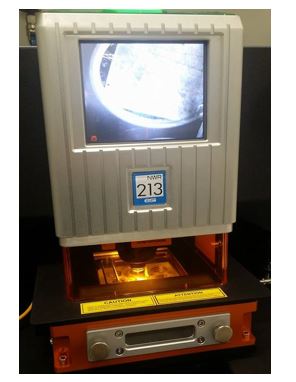
Next to the laser ablation system, there are two monitors which will be used for the laser ablation task. The left monitor records the data of the laser ablation and the right monitor controls the laser ablation system, this can be seen in Figure 18. The next step involved choosing how many spots of the hair we want ablated and the distance between these spots. A spot is where the laser will ablate the hair and the isotopes will be recorded for that spot. It was chosen to ablate the hair about half way (1cm), which gave 11 spots at about 800 micro meters apart, two of these spots were located in the root. The mass spectrometer will then document the chosen isotopes. The complete set up of the experiment is shown in Figure 19, with the laser ablation system on the left and the mass spectrometer on the right.
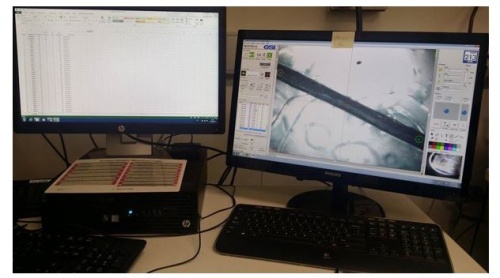
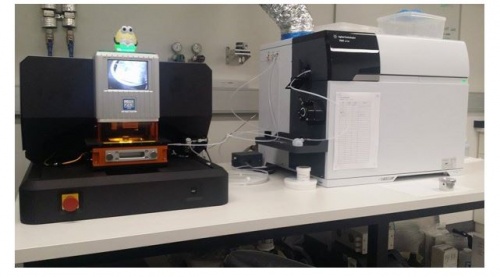
Processing the Data
The data from the ICP-MS was then put into a software called Iolite, this is how we managed the data and removed any anomalies [29]. The overall waveform of the isotopes in the hair sample for several spots can be seen in Figure 20. An enhanced and zoomed in version of one of the spots is shown in Figure 21.

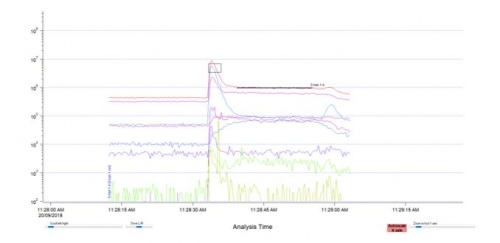
A brief explanation of the waveform composition will be done. Each waveform is an individual isotope, where the top waveform is the average of all the other waveforms. The first 20 seconds of the waveform, shows a relative flat line, this is the laser ablation system calibrating itself. This information is not useful. The waveform peaks up (represented with a square box), this is when the laser just hits the surface of the hair. Then the waveform is a flat line, this is when the laser is ablating the inside of the hair. This is the important information. In some cases the waveform peaks up at the end, this is the laser ablating through the hair and onto the sticky tape and quartz slide. To compare the results more precisely, two sets of data were captured, the surface of the hair and inside the hair. Only getting these results, meant there was so contamination from the sticky tape or the calibration set up. Lastly the results were outputted into one comprehensive Excel file, with all the necessary data, a portion of the data can be seen in Figure 22.
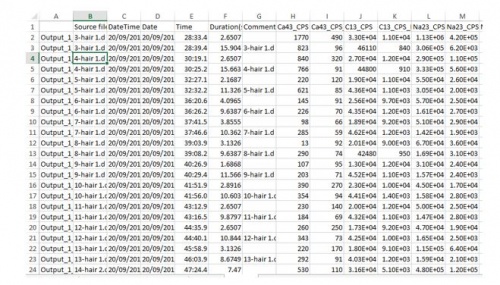
Data Analysis
Analysing the data, there were several isotopes that were found in the hair, these isotopes are shown in Table 5.

Strontium
The comparison of the strontium in the different samples can be seen in Figure 23.

The x-axis represents the distance of the hair ablated and the y-axis is the amount of strontium in the hair at that distance. Samples A and E, are the samples that left Adelaide and came back. For sample E about the first 4000um of hair is when they were in Bali, except for the very first point where they were in Adelaide. Observing the figure, sample E has two high peaks of strontium levels, one at about 1500um and the other at about 3200um, this indicates that there is high strontium levels in Bali. The rest of the value of strontium are low, when sample E came back to Adelaide. For sample A about the first 2000um is when they were in Japan, except for the very first point where they were in Adelaide. Observing the figure, there is a peak at about 1500um, indicating higher strontium values, than that of when sample A was in Adelaide. Overall, these results are concluding that the strontium levels in Adelaide are smaller than that of Bali and Japan.
Conclusion
The strontium level is lower in Adelaide than that of Bali and Japan. Relating this to the Somerton Man, as pervious groups did the ICP-MS on his hair and got high strontium reading. This indicates that Somerton Man must have visited another country with high strontium level, before his visited Adelaide.
Project Management - Planning and Feasibility
Timeline
The timeline Gantt chart has been attached in appendix B. It has listed the key milestones of the project (shown in Table 7). Table 7 Key Milestones of the Project
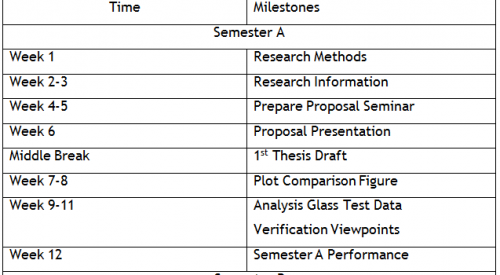
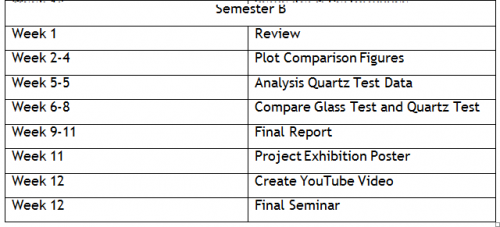
Work breakdown
The key task for the project is plotting and comparing data figures. Then, finding clues from the comparison. Due to two group members have different study directions, the project work is individual.
Task allocation
The project has two directions. In general, two group members worked on different tasks. This report devotes to analyzing the mass spectrometer data of the Somerton man hairs. The other group member works on cracking code and writing software
Management Strategy
To ensure finishing project on time, the following strategies have been applied: • Meeting with supervisors regualrly. • Receiving effective feed backs from supervisors • Finishing tasks without delay • Communicating with group member frequently.
Budget
No hardware was required in this project. All the softwares used in this project were either provided the University of Adelaide or open-sourced. As a result the $500 budget was not used at all.
Risk Management
The risks of project are listed in Table 2. The first risk should be considered is misunderstanding project tasks. So, the well communication with supervisors is essential. For this report, the crucial task is plotting figures by Matlab. Matlab unavailable will have influence on project processing. However, the Matlab is available on the computers of university. So, this risk can be negligible. Table 8 Project Risks
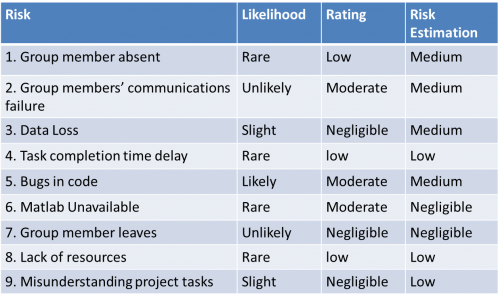
Future work
Code cracking
In the part of code cracking, the next several tasks are expected to be finished: 1. Extend the two tests to other languages which have not been tested. 2. Perform more n-grams test using the Simhash Algorithm. 3. Increase the number of tests in the 50-letters group Levenshtein test to see if the randomness can be avoided.
Hair data analysis
In the part of mass spectral analysis, Somerton man’s hair elements data which got from glass test and quartz test have been plotted. The future works as following: 1. Re-analysing the uncommon elements value of Somerton man’s hair 2. Find the Somerton man’s living environment clues 3. Find the same trend part from two Somerton man’s hair comparison figures. 4. Gain the constant number to multiply one test data
Conclusions
Code cracking
In this project, two new algorithms have been researched and introduced to check the similarities between the mysterious code and texts of different languages. Algorithms have been implemented in Java. Text materials for each test have been gathered and arranged into ideal formats. Individual test for each algorithm has been designed and implemented. After analyzing test results the conclusion that the code consists of Initialism of English has been drawn out.
Hair data analysis
In this project, three important comparisons of experimental data were made. These three comparisons are related to glass test, quartz test and the comparison of glass and quartz test results. In the comparison of the experimental data of glass plate test, the relative values of element content for lead, mercury, arsenic and cadmium in Somerton man’s hair are significantly higher than control samples in certain period of time. However, these elements’ content have been reduced to a safe range before his death. Thus the high content of these elements cannot be regarded as the main cause of Somerton man’s death, only as a reference to the change of living environment. In the comparison for the data of quartz test, the total amount of recorded elements were reduced from 44 in glass test to 35 which is due to the high purity of quartz plate. Thus, some elements in glass test are excluded. Through comparison, the content of carbon and sulphur in Somerton man’s hair has a large difference with the fourth sample. In addition, the content of potassium, strontium and calcium are similar with the first sample. Therefore, it can assume that Somerton man’s living area is different with the fourth sample, but similar with the first sample. The data comparison between glass and quartz test does not achieve the desired results. So, the experimental method may need to change in the future work.
Appendices
- Appendix A:Glass test figures
- Appendix B: After Moving-average Filters figures
- Appendix C: Quartz data figures
- Appendix D: Two test comparison figures
- Appendix E: The Timeline Gantt Chart
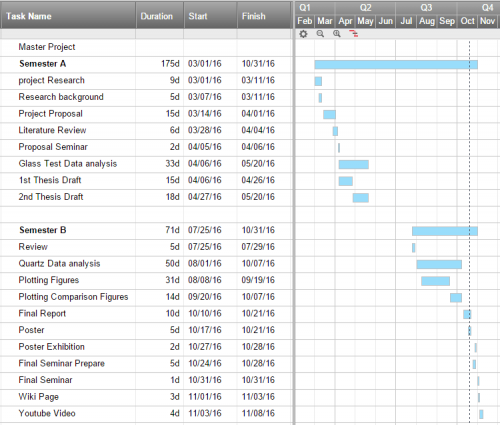
References
[1]. L. Griffith and P. Varsos. (2013). Semester B Final Report 2013 – Cipher Cracking . Available: http://www.adelaidenow.com.au/news/south-australia/somerton-man-mystery-new-details-revealed-of-jo-thomson-nurse-in-the-case/news-story/4c6bccbd2318584ad0cc6daaf3d8abd4
[2]. Renato Castello, “New twist in Somerton Man mystery as fresh claims emerge,” Sunday Mail SA, November 23th, 2013. Access via Internet: http://www.adelaidenow.com.au/news/south-australia/new-twist-in-somerton-man-mystery-as-fresh-claims-emerge/story-fni6uo1m-1226766905157
[3]. Lynton Grace, “Somerton Man mystery: New details revealed of Jo Thomson, nurse in the case”, The Advertiser, 29th May 2015. Access via Internet: http://www.adelaidenow.com.au/news/south-australia/somerton-man-mystery-new-details-revealed-of-jo-thomson-nurse-in-the-case/news-story/4c6bccbd2318584ad0cc6daaf3d8abd4
[4]. From Wikipedia, the Taman Shud Case. Access via Internet: https://en.wikipedia.org/wiki/Tamam_Shud_case
[5]. From Internet: http://ciphermysteries.com/wp-content/uploads/sites/6/2014/01/SomertonManCode-wikipedia.jpg
[6]. Inside Story, presented by Stuart Littlemore, ABC TV, screened at 8 pm, Thursday, August 24th, 1978.
[7]. A. Turnbull and D. Bihari. (2009). Final Report 2009: Who killed the Somerton man? Available: https://www.eleceng.adelaide.edu.au/personal/dabbott/wiki/index.php/Final_report_2009:_Who_killed_the_Somerton_man%3F
[8]. K. Ramirez and L-V. Michael. (2010). Final Report 2010 . Available: https://www.eleceng.adelaide.edu.au/personal/dabbott/wiki/index.php/Final_Report_2010
[9]. S. Maxwell and P. Johnson. (2011). Final Report 2011 . Available: https://www.eleceng.adelaide.edu.au/personal/dabbott/wiki/index.php/Final_Report_2011
[10]. A. Duffy and T. Stratfold. (2012). Final Report 2012 . Available: https://www.eleceng.adelaide.edu.au/personal/dabbott/wiki/index.php/Final_Report_2012
[11]. L. Griffith and P. Varsos. (2013). Semester B Final Report 2013 – Cipher Cracking . Available: https://www.eleceng.adelaide.edu.au/personal/dabbott/wiki/index.php/Semester_B_Final_Report_2013_-_Cipher_cracking
[12]. N. Gencarelli and J-K. Yang. (2015). Semester B Final Report 2015 – Cipher Cracking . Available: https://www.eleceng.adelaide.edu.au/personal/dabbott/wiki/index.php/Final_Report/Thesis_2015
[13]. MS. Charikar. (2002). Similarity estimation techniques from rounding algorithms. Available: https://www.cs.princeton.edu/courses/archive/spr04/cos598B/bib/CharikarEstim.pdf
[14]. G.S. Manku, A. Jain and A. Das Sarma. (2007). Detecting Near-Duplicates for Web Crawling. Conference on World Wide Web. http://citeseerx.ist.psu.edu/viewdoc/download?doi=10.1.1.78.7794&rep=rep1&type=pdf
[15]. From Wikipedia, the Vector Space Model. Access via Internet: https://en.wikipedia.org/wiki/Vector_space_model#/media/File:Vector_space_model.jpg
[16]. From Internet: http://static.oschina.net/uploads/img/201308/30125158_L1CI.jpg
[17] Adelaide Microscopy, ‘instrumentation’ viewed on 23 March 2016 <https://www.adelaide.edu.au/microscopy/instrumentation/icpms.html>
[18] ‘Australia can solve one of the world’s most intriguing mysteries by exhuming the body of The Somerton Man’ 2015, in NEWS.com.au, viewed on 15 March 2016. <http://www.news.com.au/national/crime/ >
[19]Batool,AI, Rehman, FU, Naveed, NH, Shaheen,A and Irfan,S 2010 ‘Hairs as biomonitors of hazardous metals present in a work environment’ in Full Length Research Paper, vol. 10, no. 18, pp.3602-3607.
[20] ‘Dead Man Found Lying on Somerton Beach’ 1948, in The News, vol. 51, no. 7902, pp. 1.
[21] Miekeley, N, Dias Carneiro, MTW, and Porto da Silveira, CL 1998, ‘How reliable are human hair reference intervals for trance element?’ in the Science of the Total Environment, vol. 218, no. 1998, pp. 9-17.
[22] School of Electrical and Electronic Engineering ‘Final Year Project Proposal’, 2014
[23] ‘Somerton man’ viewed on 23 March 2016 <https://en.wikipedia.org/wiki/Taman_Shud_Case>
[24] ‘Why The Somerton Man Endures As One Of Australia's Most Fascinating Cold Cases’ 2016, in GIZMODO, viewed on 15 March 2016. <http://www.gizmodo.com.au>
Glossary and Symbols
- ICP-MS: Inductively Coupled Plasma Mass Spectrometer